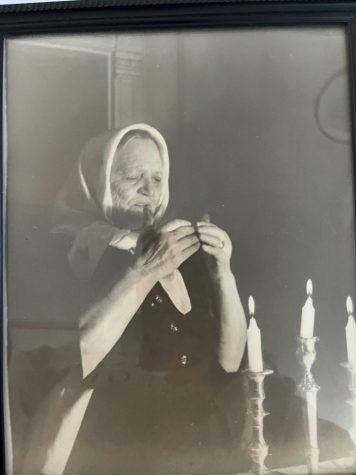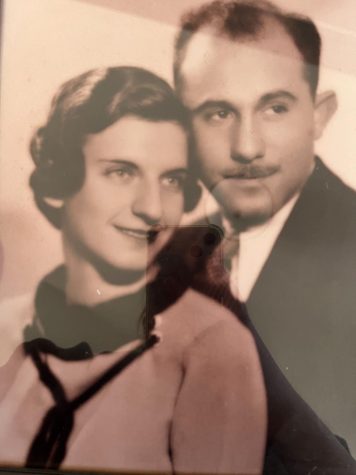When meeting someone new, the first thing you learn about them is their name. A name serves as an identifier, signaling who someone is. A person’s name comes with a story. It says something about a person’s past or their family’s heritage. Sometimes it serves as an indicator of future experiences. Regardless of the origins of them, names provide a glimpse into who a person is before they even enter a room.
According to some Jewish traditions, the name of a newborn serves as a guide for the child’s life—specifically one that is connected to a recently deceased relative. Many parents will name their baby after a relative who recently passed away in the hopes that this new life will preserve the memory of the deceased. By naming a child after someone who has passed, parents hope their baby will emulate the attributes of their namesake. Simultaneously, there are several superstitions in European Jewish communities surrounding naming a baby after living relatives. Because of this, many Jewish individuals will not name a newborn after a relative who is still alive. Parents will also often give their children names in both English and Hebrew as a way to maintain both their Jewish and American identities (or the identity of the country they live in). Sometimes the name is a direct translation from English to Hebrew, while others have a completely different name in Hebrew than they do in English.
I was named after two strong women: great-grandmothers from both sides of my family. My first name—Rachel—comes from my paternal great-grandmother: Rachel, or “Safta Rachel,” as she was known to my dad. My father’s “Safta,” which means “grandmother” in Hebrew, was responsible for getting her six children out of Iraq in the 1950s when Iraq was no longer a safe place to practice Judaism. Her husband, a Rabbi in Baghdad, never made it out. To support her family, Safta Rachel worked as a nurse and midwife, first in Baghdad and then in Switzerland before eventually settling in Israel.

Great Great Grandmother Rachel lighting Shabbat Candles.
I never got the chance to meet Safta Rachel, but I got the pleasure of hearing numerous stories about her with each one illustrating her character—an incredibly smart, compassionate, strong-willed (almost stubborn) woman, and a phenomenal storyteller. My dad recalls walking around Safta Rachel’s garden as she recounted her time in Switzerland, telling him about the people she met and what she did. As they were checking on each of her fruit trees, she told him that her home garden was nice, but Switzerland was like the Garden of Eden, describing the clear sky and vegetation that had surrounded her.
In addition to her kindness and bright smile, my dad vividly remembers her cooking, particularly a chicken and rice dish called tbeet. As a Jewish Middle-Eastern woman, Safta Rachel showed her love through food. The aromas of saffron and tomato paste remind my dad of his Safta to this day. Her expression of love through food wasn’t just reserved for immediate family; the first time my mom met her—a few months before my dad proposed—she asked my mom if she loved my dad within minutes of their introductions. After my mom confirmed her love for my dad, Safta Rachel cooked for my parents, forcing them to eat, despite their saying they weren’t hungry.
Safta Rachel epitomized the matriarch Rachel, an important biblical figure. She was strong and kind but never let others take advantage of her compassion—all attributes my parents hoped I would emulate when they named me. Although my parents did not know it at the time, my maternal grandfather’s grandmother—my great great grandmother—was also named Rachel. My grandfather did not share this piece of information until one of my brother’s directly asked him what his grandmother’s name was. Shocked, my parents, brothers, and I all turned to my grandfather, uttering statements of surprise and confusion, astonished to learn this piece of family history. My mom turned to him and asked why he didn’t say anything about this until now. His response? “Nobody asked.”
My middle name—Maya—comes from my great grandmother on my mother’s side, Marjorie. In Hebrew, Marjorie’s name was Manya, where my parents derived Maya from. Like Safta Rachel, Marjorie was an intelligent and strong woman. Known as Granny to her grandchildren, Marjorie was fantastic with numbers. Her husband, Grandad Sam, owned the Dressmaker Service, a button factory in Montreal, while she managed their finances. She could look at a list of orders and add up the total within seconds without using a calculator or lifting a pen.
Despite this understanding of numbers, Marjorie did not apply this precision to her recipes. Her “Roly Poly” recipe is particularly hard to replicate. While the recipe has been passed down, the only one who can make this biscotti-mandelbrot-cookie hybrid is my aunt Lori who learned directly from Marjorie. Instead of listing exact amounts, the recipe calls for about five cups of flour and approximately three teaspoons of salt. I did not inherit her incredible ability to understand and appreciate numbers, however I do love her “Roly Poly” recipe.

Marjorie and Grandad Sam.
Grandad Sam is where my brother Samuel got his first name. Like myself, Samuel is also named after two great grandparents. While running the Dressmaker Service, Grandad Sam loved to spend time playing games with his grandchildren, something my mom fondly remembers. She recalled a time when she was about four and was beating Grandad Sam in a game dubbed “memory”—and he was convinced that she was cheating. When he played with his grandchildren, Grandad Sam’s eyes lit up, with his infectious laugh echoing through the room. Grandad Sam was a humorous, strong, and kind man—all attributes I see in my brother.
Samuel’s middle name is Tsvi, meaning “deer” in Hebrew. His name is derived from Papa Harry, my maternal grandfather’s father: an intelligent and compassionate man.
While Samuel and I were named after four relatives who passed away, my other two brothers were not. My parents simply liked the names Jonathan Seth, and Gabriel Ari for my two younger brothers, both names that represent their Jewish identities. As they grow older, they will form deeper connections with their names, creating an identity for themselves, as I and my oldest brother have.
Learning more about the incredible women I’m named after has prompted introspection. I’ve been thinking about how I can keep their memories alive, emulate their personas, and still remain true to myself. Names serve as an external marker of who someone is, signaling a person’s identity to strangers. While two people may share a name, they are each a unique individual with a different story to tell. A name is the most recognizable part of an identity, but it is only a small part of who they are. Being named after someone keeps their memory alive and connects the name holder to their namesake through their soul.